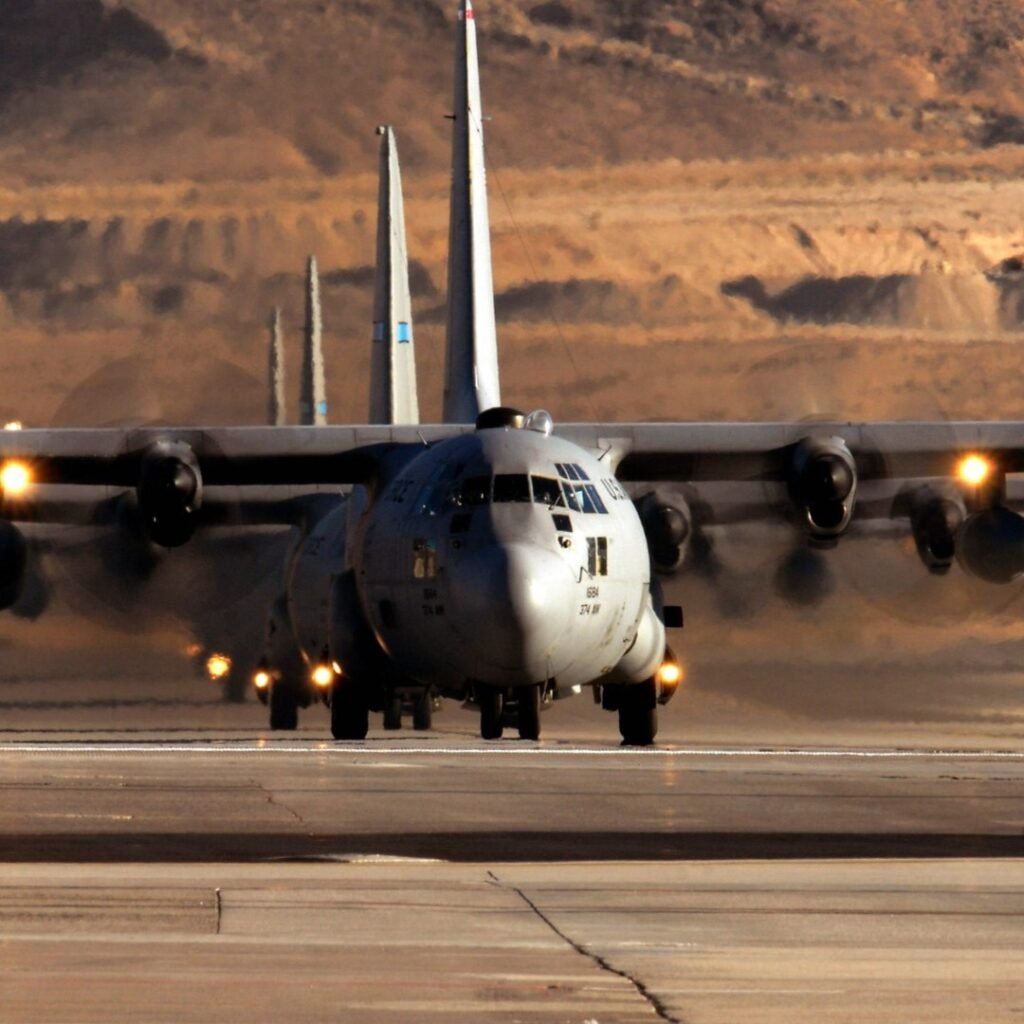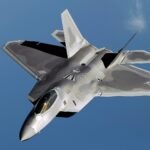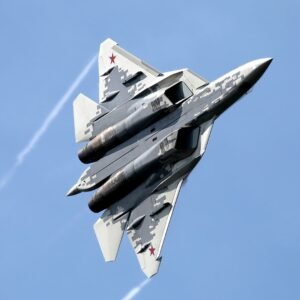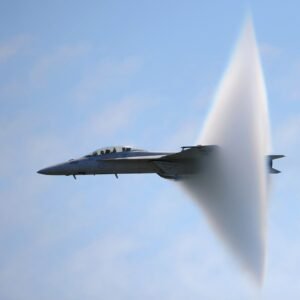I. Introduction
A. Explanation of The Lockheed Martin C130 Hercules
The Lockheed Martin C130 Hercules is a four-engine turboprop military transport aircraft, originally designed by Lockheed Martin for the United States Air Force in the 1950s. The aircraft is named after the mythological hero Hercules, known for his strength and versatility, and the C130 certainly lives up to this name. The C130 is capable of operating in a wide range of environments, from desert sands to Arctic ice, and is used for a variety of military and civilian missions.

B. Brief History of The Aircraft
The Lockheed Martin C130 Hercules was first flown in 1954 and entered service with the U.S. Air Force in 1956. Since then, it has been used by militaries and civilian organizations around the world, making it one of the most successful military aircraft designs in history. Over 2,500 C130s have been built to date, and the aircraft continues to be produced and modernized to meet the evolving needs of its users.
C. Importance of The C130 Hercules in Military and Civilian Operations
The Lockheed C130 Hercules is an important asset in military and civilian operations, due to its versatility and ruggedness. It can operate from short and unimproved runways, making it ideal for remote and austere locations. It can also be used for a variety of missions, including airlift, aerial refueling, search and rescue, and humanitarian aid. The C130 has played a key role in many conflicts, including the Vietnam War, the Gulf War, and the War on Terror, as well as in natural disaster relief efforts around the world.

II. Design and Features of The Lockheed Martin C130 Hercules
A. Overview of The Aircraft’s Design and Construction
The Lockheed Martin C130 Hercules is a high-wing aircraft with a T-tail configuration, four turboprop engines, and a rear loading ramp. The aircraft is designed for maximum versatility and durability, with a sturdy airframe and large cargo capacity. The C130 has a range of over 2,000 nautical miles and can carry up to 42,000 pounds of cargo or 92 passengers.
B. Key Features, Such as Its High-Wing Design, Four Turboprop Engines, and Cargo Capacity
The C130’s high-wing design provides excellent visibility for pilots and crew, as well as increased ground clearance for loading and unloading cargo. The four turboprop engines provide reliable and efficient power, allowing the C130 to operate in a wide range of environments. The aircraft’s cargo capacity is also a key feature, allowing it to transport large amounts of equipment, supplies, or personnel.
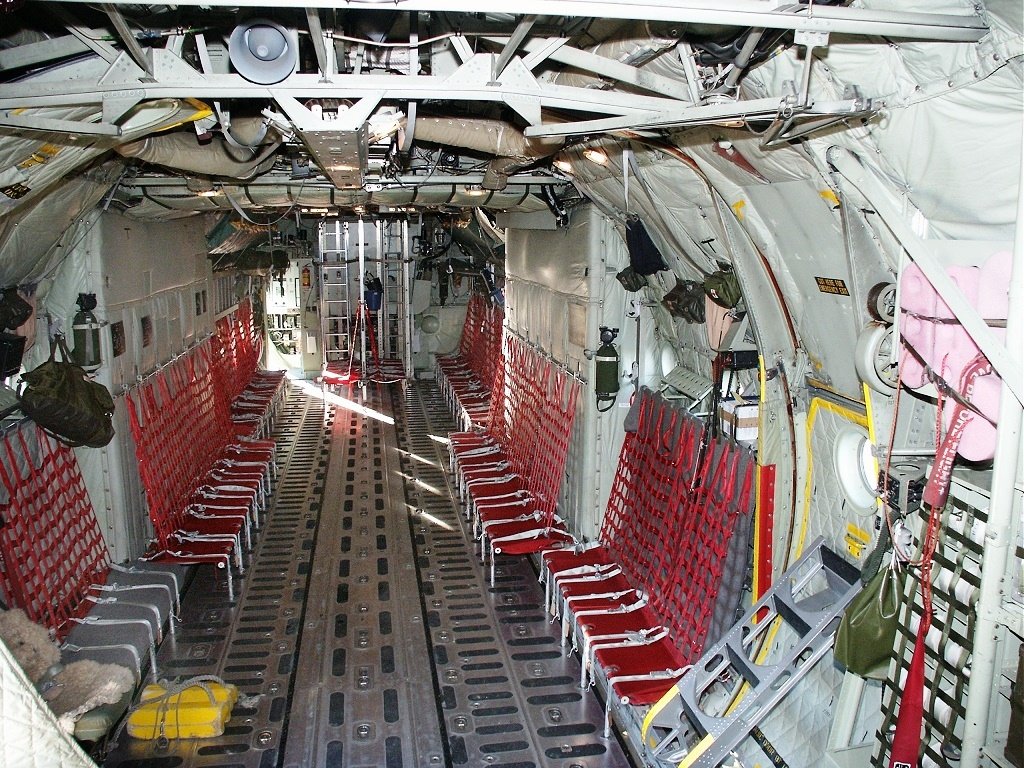
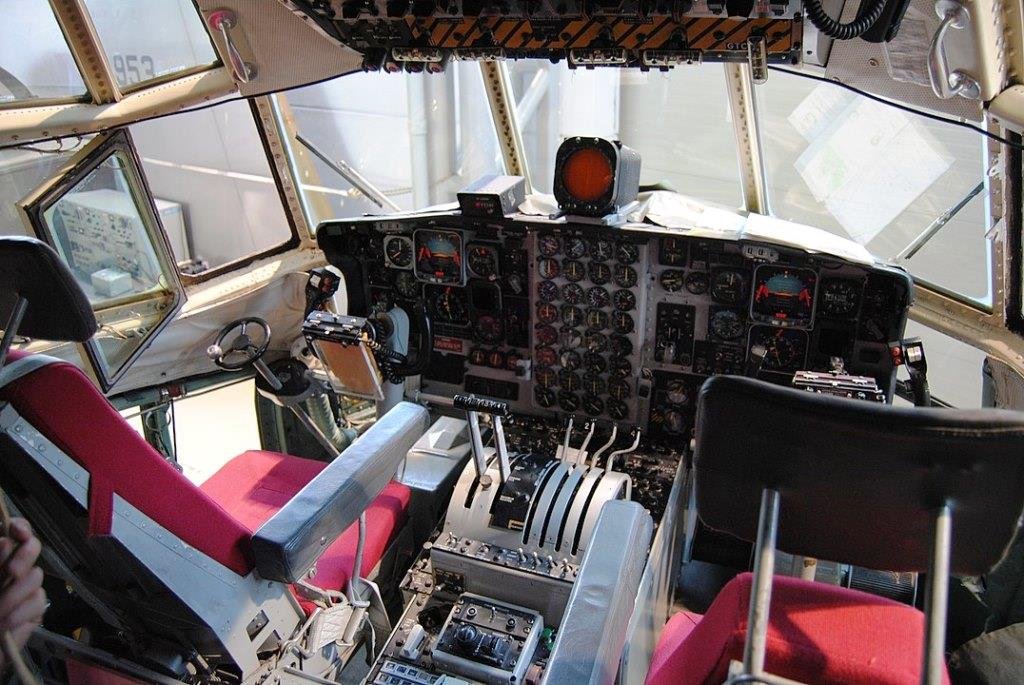
C. General Specification of The Lockheed Martin C130 Hercules
| Specification | Value |
| Crew | 3 (pilot, co-pilot, and loadmaster) |
| Capacity | 92 passengers or up to 42,000 lb (19,050 kg) of cargo |
| Length | 97 ft 9 in (29.79 m) |
| Wingspan | 132 ft 7 in (40.41 m) |
| Height | 38 ft 10 in (11.84 m) |
| Maximum takeoff weight | 155,000 lb (70,308 kg) |
| Powerplant | 4 × Rolls-Royce AE 2100D3 turboprop engines, 4,700 shp (3,500 kW) each |
| Maximum speed | 362 knots (417 mph, 671 km/h) |
| Cruise speed | 292 knots (336 mph, 540 km/h) |
| Range | 2,050 nautical miles (2,360 mi, 3,800 km) |
| Service ceiling | 33,000 ft (10,000 m) |
D. Variants of the C130 Hercules, Including Specialized Versions for Various Missions
Over the years, many variants of the C130 Hercules have been developed to meet specific mission requirements. These variants include the AC-130 gunship, which is equipped with side-firing weapons for close air support; the KC-130 aerial refueling tanker; and the HC-130 search and rescue aircraft. Each variant has unique features and capabilities, but all are based on the same reliable and versatile airframe of the C130.

Some of The Major Variants:
- C130H: This is the standard transport variant of the C130, used by the US Air Force and many other air forces around the world. It has a cargo capacity of up to 42,000 pounds and can carry up to 92 passengers.
- AC-130 Gunship: The AC-130 is an armed variant of the C130 designed for ground attack and close air support missions. It is equipped with a variety of weapons systems, including cannons, machine guns, and missiles.
- HC-130: The HC-130 is a search and rescue variant of the C130, used primarily by the US Air Force and Coast Guard. It is equipped with a variety of search and rescue equipment, including radar and infrared cameras, and can drop rescue rafts and survival gear.
- KC-130: The KC-130 is an aerial refueling variant of the C130, used to refuel other aircraft in flight. It is equipped with a refueling probe and drogue system and can carry up to 60,000 pounds of fuel.
- EC-130: The EC-130 is an electronic warfare variant of the C130, used for airborne command and control, and electronic surveillance and jamming.
- WC-130: The WC-130 is a weather reconnaissance variant of the C130, used by the US Air Force and National Hurricane Center to gather meteorological data on hurricanes and other severe weather events.
- C-130J Super Hercules: The C-130J is a modernized variant of the C130, featuring improved avionics, engines, and cargo capacity. It also has a longer range and improved STOL capabilities.
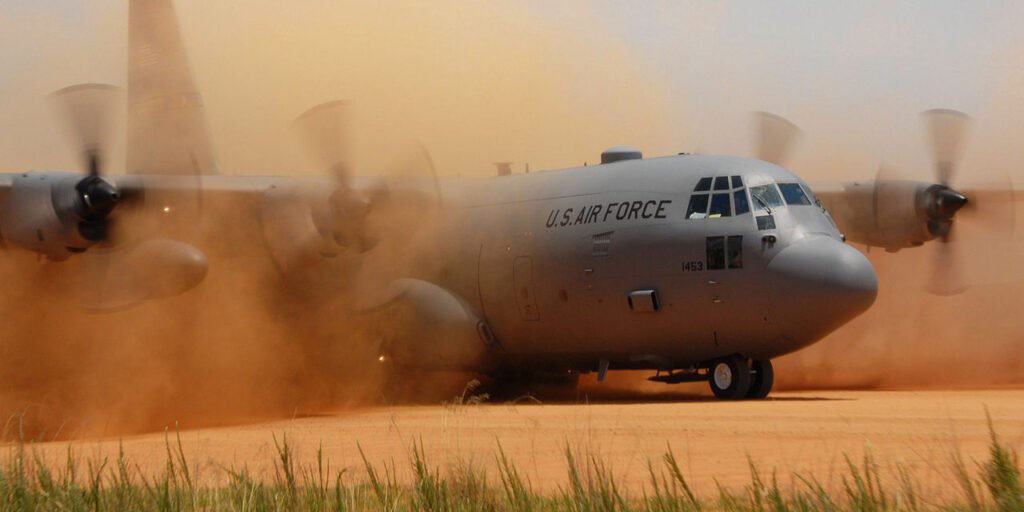
II. Performance and Capabilities of The Lockheed Martin C130 Hercules
A. Maximum Speed, Altitude, and Range of The Aircraft
The Lockheed Martin C130 Hercules has a maximum speed of around 360 knots, a service ceiling of over 33,000 feet, and a range of over 2,000 nautical miles. These capabilities allow the C130 to operate in a wide range of environments and to transport cargo and personnel quickly and efficiently.
B. Payload and Cargo Capacity
The C130’s cargo capacity is a key feature of the aircraft, allowing it to transport large amounts of cargo or personnel. The aircraft’s cargo compartment measures 41 feet in length, 9 feet in height, and 10 feet in width, with a maximum capacity of 42,000 pounds. The C130 can also carry a variety of vehicles and equipment, including trucks, jeeps, and artillery.
C. Aerial Refueling Capabilities
The KC-130 variant of the C130 Hercules is equipped with a refueling probe and drogue system, allowing it to refuel other aircraft in flight. The KC-130 can carry up to 60,000 pounds of fuel and has a maximum refueling rate of 300 gallons per minute.
D. Short Takeoff and Landing (STOL) Capabilities
The C130’s STOL capabilities allow it to operate from short and unimproved runways, making it ideal for remote and austere locations. The aircraft can take off and land in as little as 3,000 feet, depending on the conditions.
E. Specialized Mission Capabilities
The Lockheed Martin C130 Hercules has been used in a variety of specialized missions, including aerial firefighting, Arctic resupply, and humanitarian aid. The HC-130 variant is equipped with a variety of search and rescue equipment, including radar and infrared cameras, and can drop rescue rafts and survival gear to stranded individuals.
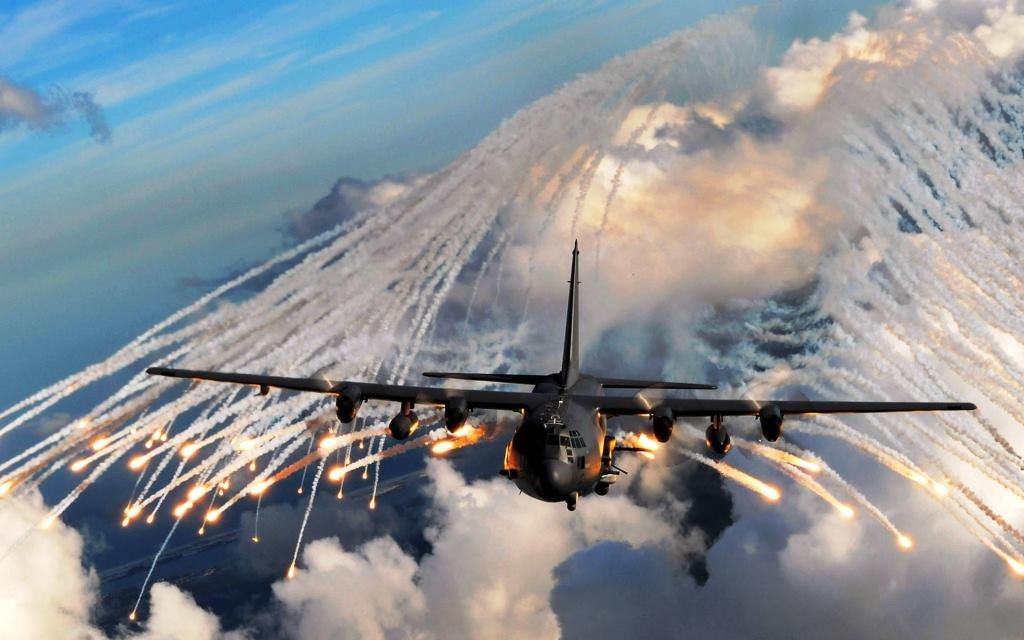
III War History of The Lockheed Martin C130 Hercules
- Vietnam War: The C130 was used extensively during the Vietnam War, primarily for transport and aerial delivery of supplies and troops. It was also used for reconnaissance and search and rescue missions.
- Desert Storm: During the Persian Gulf War in 1991, the C130 played a key role in transport and logistics operations, delivering troops and equipment to the front lines.
- Afghanistan War: The C130 has been used extensively in the War in Afghanistan, primarily for transport and aerial delivery of supplies and troops to remote and austere locations.
- Iraq War: The C130 played a key role in the 2003 invasion of Iraq, delivering troops and equipment to the front lines and providing aerial support for ground operations.
- Humanitarian missions: The C130 has also been used for numerous humanitarian missions around the world, including disaster relief efforts in Haiti, Pakistan, and the Philippines.
- Special operations: The AC-130 gunship variant of the C130 has been used extensively in special operations missions, including in support of US and coalition forces in Afghanistan and Iraq.

IV. Conclusion
The Lockheed Martin C130 Hercules is a versatile and rugged aircraft that has played a key role in military and civilian operations around the world. Its high-wing design, four turboprop engines, and cargo capacity make it ideal for a variety of missions, while its STOL capabilities allow it to operate in austere environments. The C130 has proven its worth in conflicts and natural disasters, and its variants continue to be developed and modernized to meet the evolving needs of its users.
Read More:-Boeing C17 Globemaster III and F22 Raptor Fighter Jet.

